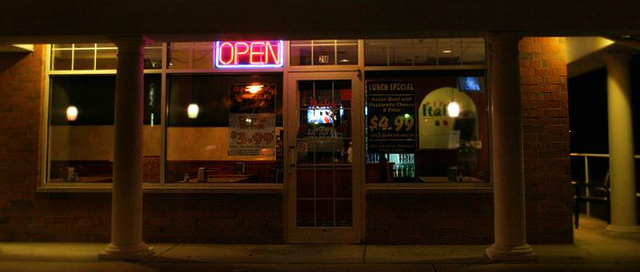About Pizza Italia and reviews
Pizza ItaliaOur restaurant just got renovated! Please come and check it out!
Voted Lake County's Top Pizza Place, Pizza Italia is a hidden gem of an eatery featuring fresh and tasty Italian cuisine. We're serving up a large variety of Italian dishes including pizza, pasta, san...
Popular Menu Items
Read our reviews
3 reviews | 56 orders
The delivery was very prompt and courteous. Both the cheesy garlic bread and the pizza were fantastic! I would highly recommend Pizza Italia to anyone I meet.
3 reviews | 26 orders
Our favorite place to order pizza in Libertyville. Crispy crust, great sauce, excellent toppings. Can't go wrong.
2 reviews | 29 orders
Great every time.I grew up in the city and Pizza Italia reminds me the the wonderful pizza from my childhood.Best pan pizza ever. Thin crust is spot-on.
Reviews:
J S
We have tried many different items on the menu and everything has been really good. My favorite remains their deep dish pizza. The crust is phenomenal. The sauce is fresh and chunky. Prices are very good for the quality and product.
Movingalong1234
We ordered a thin crust pizza-- crust was awesome! Good sauce and plentiful toppings. We ordered delivery and they came before expected. Very nice delivery driver. We will order from them again
Ed Z
To look at the location from the outside you might think it's just another pizza place and you couldn't be more wrong. Great variety of pizza and a full bar. Stop by for a drink or a slice or both and you won't be disappointed....
KEI K
On Friday night, I was invited to hang out with my friends in Mundelein, IL.They asked me what I want to eat, so I answered I want to try a good deep dish pizza.My friends ordered it and when I arrived, it was...
Libertyvillian
In today's anonymous, digital world, it's nice to be a regular at a place where the owner and staff know your name. That's how it is at Pizza Italia in Libertyville. Thursday is pizza night at my house, and PI is our consistent go-to pizza...
1Racine1_
Their deep dish pizza is to die for! I loved Pizza Italia, from the appetizers to their thin crust to their deep dish pizzas...it's all so good and the wait staff is so welcoming and friendly! It is worth the wait we had (our order...
Blueteej1997
Dine-in or take out, the food is always good. It is worth the occasional long wait, and we have tried the thin crust, the deep dish pepperoni pizza, and a breaded-mushroom appetizer. The cheese is thick and the sauce is rich. My stepdaughter is very...
O9753VWchrism
This place has great Chicago style pizza and great prices especially the lunch special. If you decide to eat in during lunchtime and schools underway a lot of teenagers may appear
WisconsinDad34
Outstanding thin and pan pizza. Carry-out and make sure you have coupons. I don't understand why places like this charge an arm and a leg, but then give you a great deal with coupons. Wish they'd just charge a normal price and reward their regulars,...
Mrjustice
Above Average thin-crust Pizza, at a decent price. Fast, efficient and friendly service. When ordering take-out Pizza in Libertyville, this is the place.



